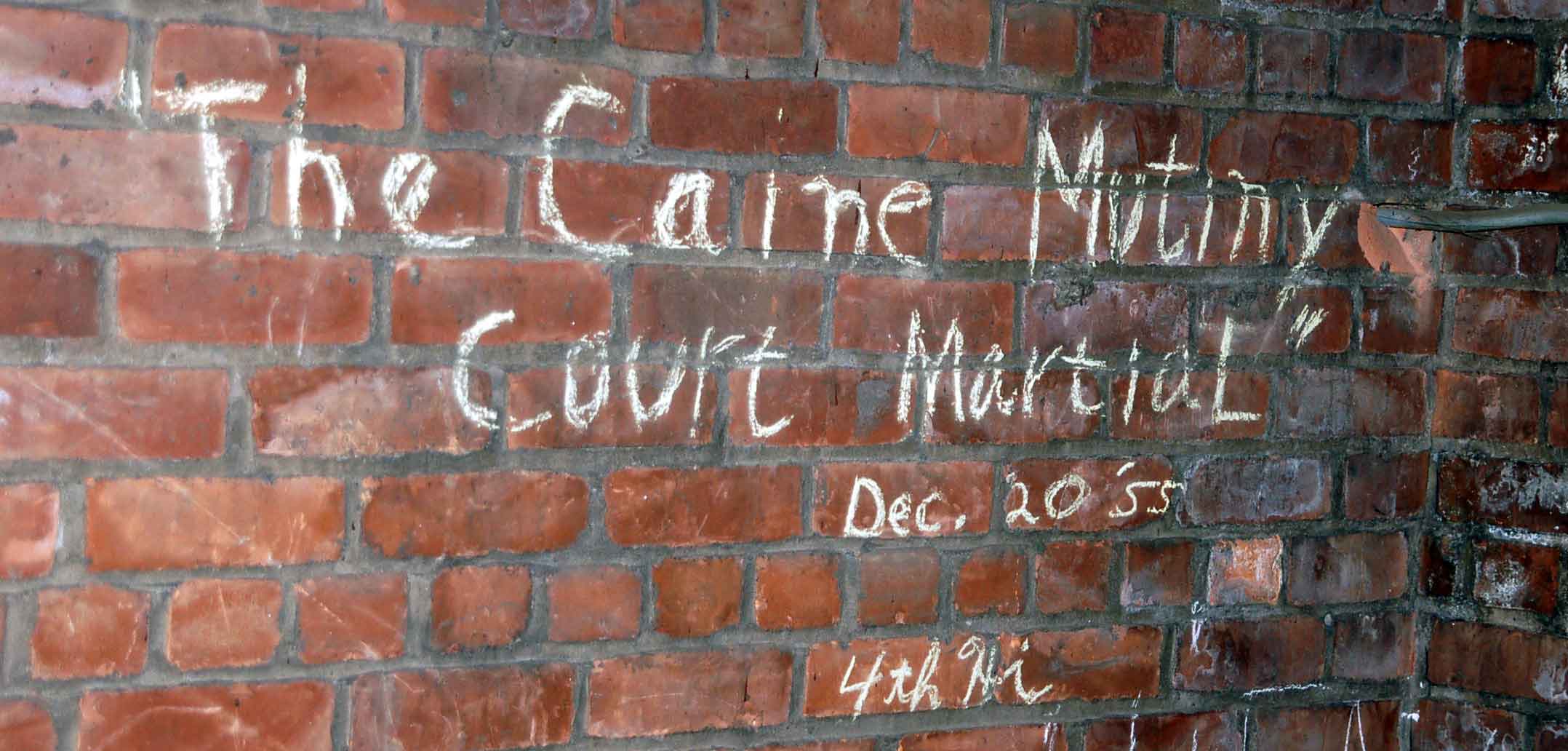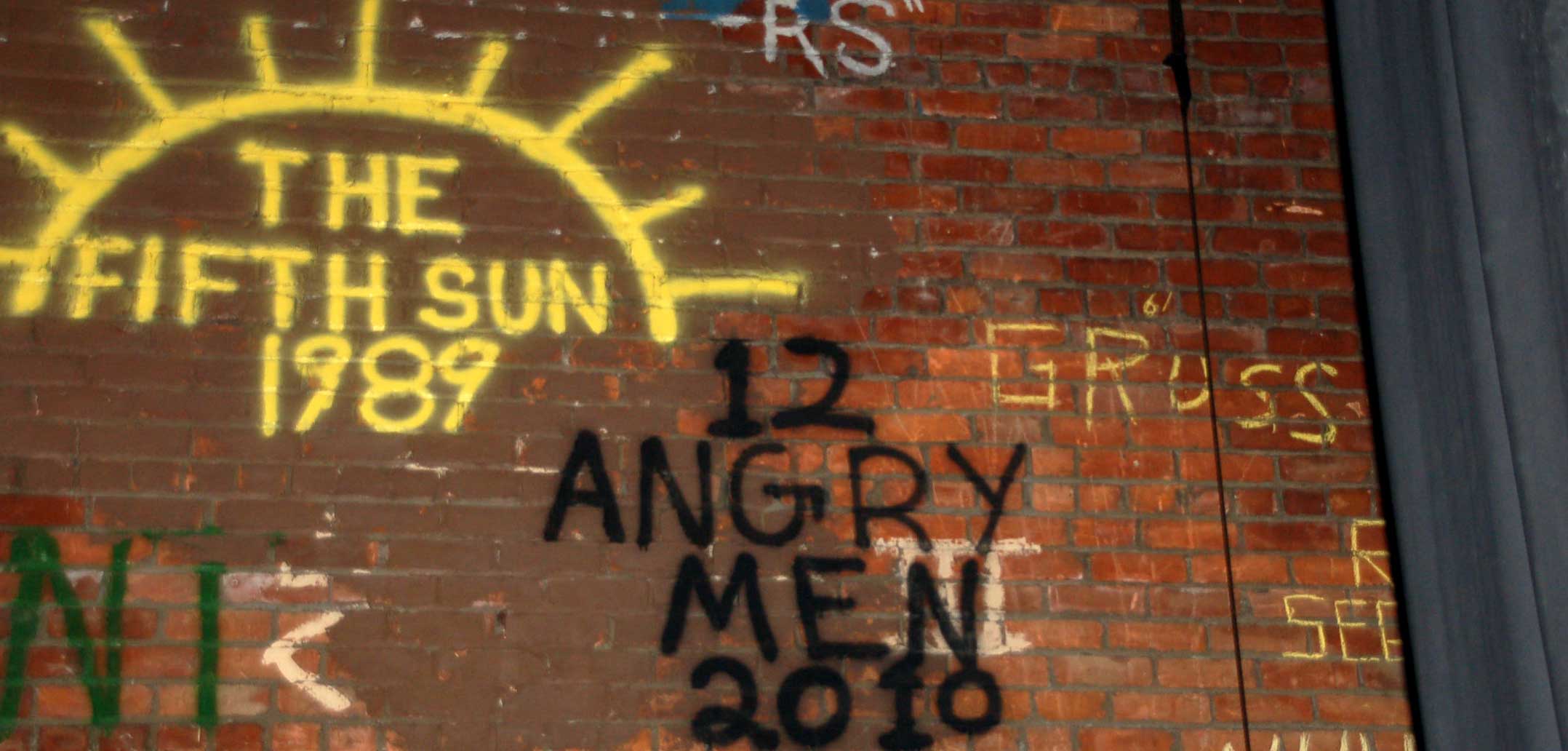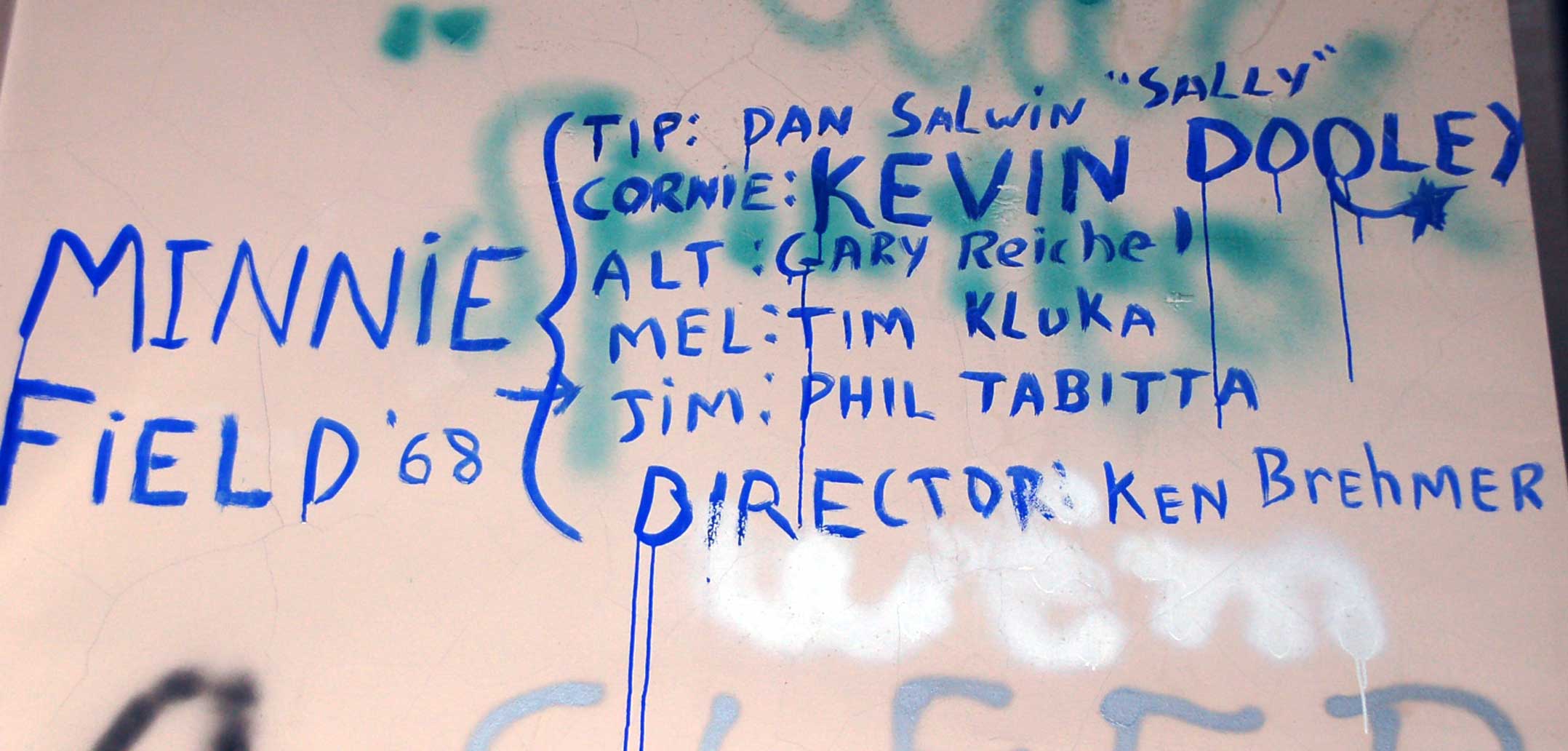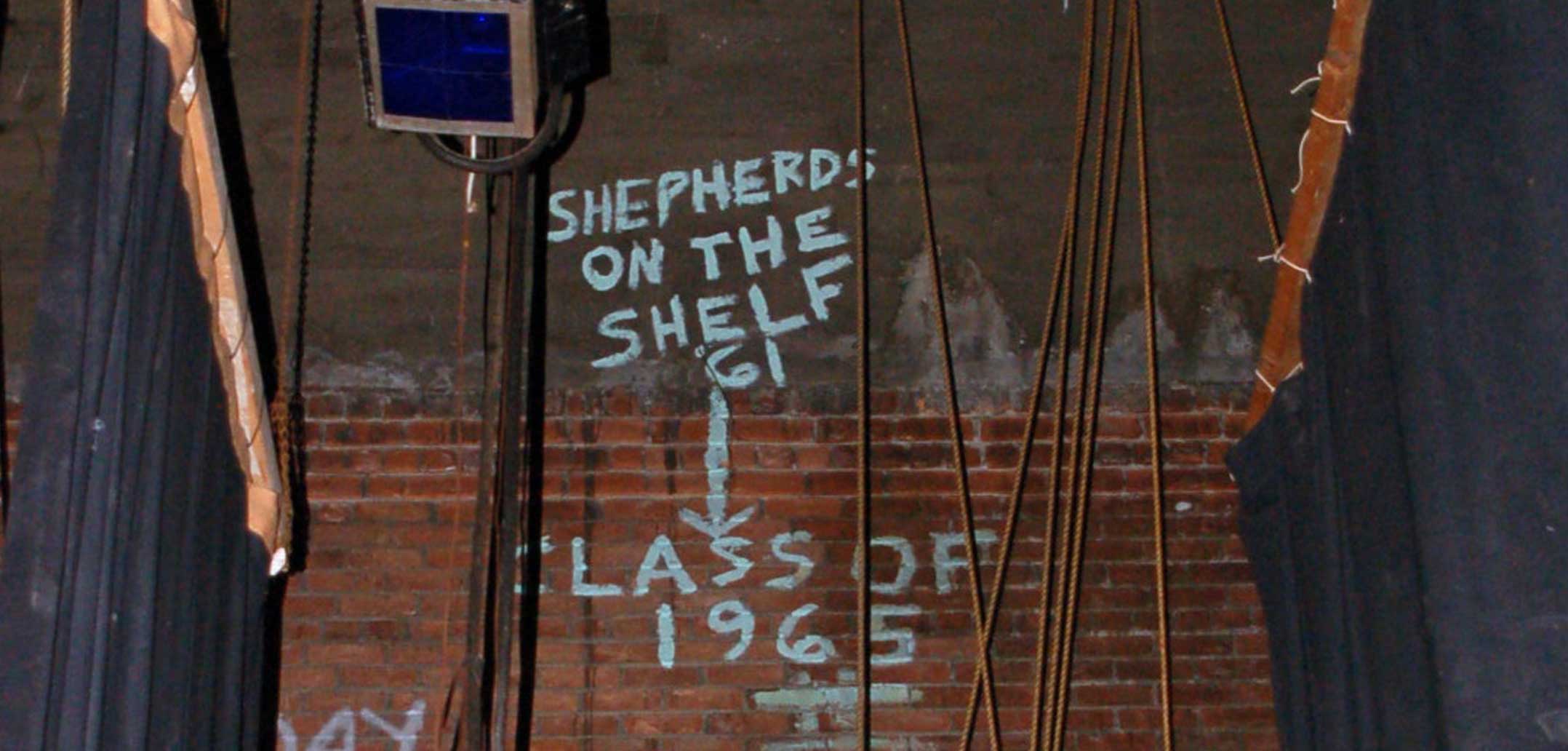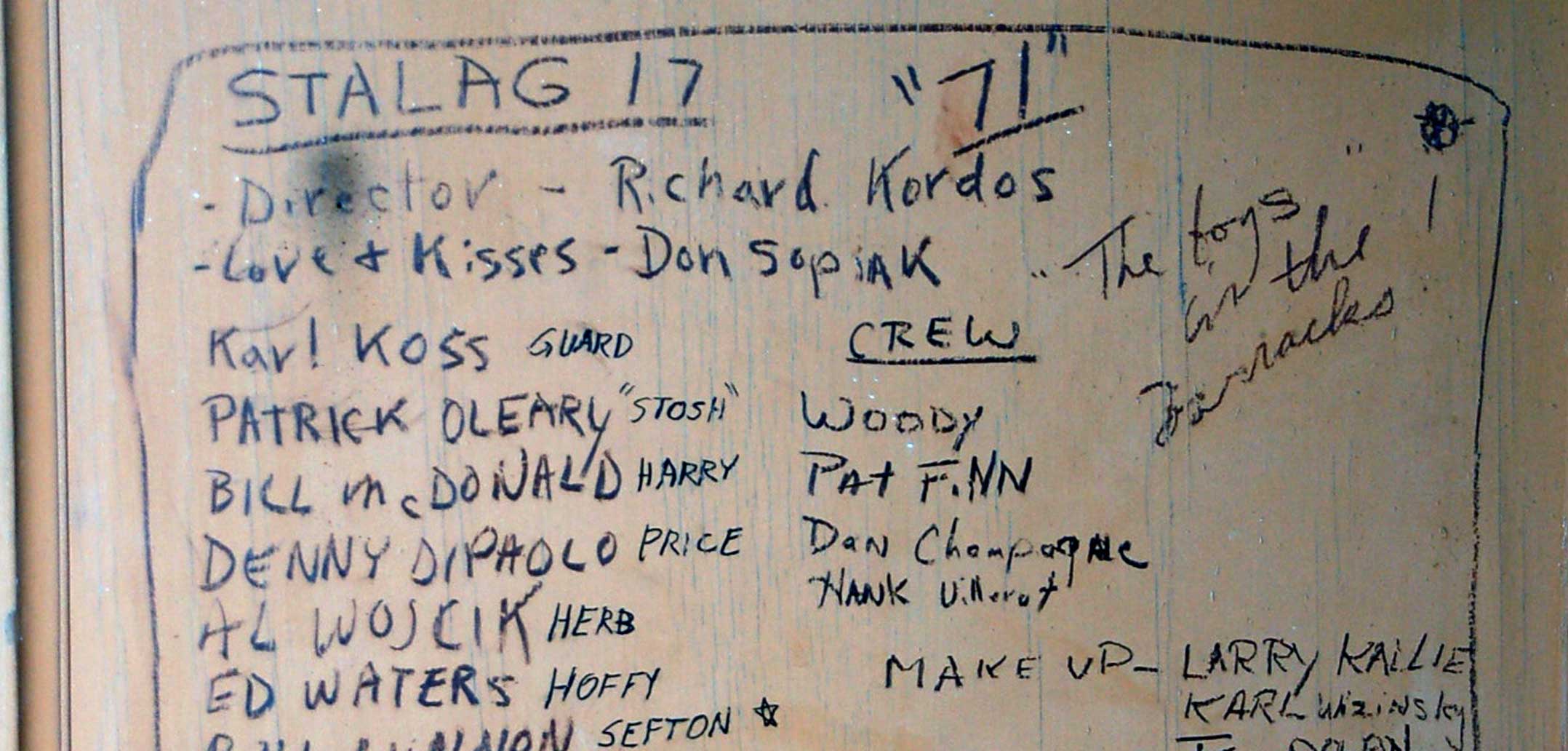Apr 02, 2015
by Daniel Gallio
Tradition of yearly plays is captured by auditorium graffiti.
(This adapted article first appeared in the summer 2010 Mosaic.)
Senior priest and former resident priest Msgr. Edward Baldwin is an expert of Sacred Heart history. He believes the seminary's rich acting tradition extends back over seventy years, beginning only a decade after the seminary was completed in 1924.
Monsignor entered Sacred Heart's high school in 1943 and graduated from its college in 1951. He recalls hearing of a faculty member, a Father Benson, who began staging student plays sometime in the 1930s. Father Benson came from the East Coast and was involved in theater before being ordained.
He was very creative, Monsignor recalls. Putting on plays was his thing. Plus, producing plays and inviting the public to attend helped the seminary to publicize itself, since Sacred Heart then was the last stop on the trolley line, far north of downtown Detroit and built on recent farmland.
Monsignor says seminarians had to perform the female roles in some plays, which meant dressing in female stage costumes. But Cardinal Edward Mooney, archbishop of Detroit from 1937-1959, attended a play in the 1940s and put a stop to that, Monsignor says with a chuckle. From then on during his governance, the plays had to have male-only characters.
The seminarians would stage special Saturday matinees just for the women religious of the archdiocese. The nuns could only go out on Saturday afternoons back then, Monsignor says, since most of them taught school during the week. The auditorium was quite a sight with rows of nuns in their full habits.
Sacred Heart's tradition of stagecraft is chronicled over much of the backstage brick walls, ceilings, and stairwells. After each yearly high school or college play, a cast member would paint the name of the play on a wall, sometimes including the cast members' names. Monsignor Baldwin thinks this tradition goes back to the 1940s, although the earliest graffiti this author could locate was from December 1955, when the seminarians performed The Caine Mutiny Court-Martial.
Seminarian Matthew Hood rediscovered the graffiti for the 1968 performance of 12 Angry Men by accident. During a rehearsal while co-directing the 2010 12 Angry Men performance, Matthew climbed a ladder into the attic high above the stage to adjust some lighting . . . and there it was, covering an entire end wall. No one knew the graffiti was there. It was neat to see the mural of the same play we were staging over forty years later, he says of the surprising find.
The auditorium has been used only occasionally since 1989, the year of the last seminarian performance prior to 2010. (The play tradition ended when a drama course was dropped from the curriculum.) Lately, the seminary's administration has been discussing restoring the 550-seat auditorium to its original functionality and beauty. It could be utilized for more seminary events and perhaps offered as conference space to archdiocesan and church groups.
John Duncan, Sacred Heart's building administrator, supports the idea but concedes this would take a bit of work and, of course, money. During the building renovation of the late 1980s, Mr. Duncan explains , the auditorium's ventilation system for summer cooling was dismantled and would need replacing, although the heating system works. Lighting would have to be upgraded along with cosmetic repairs throughout.
But it would make no sense to do the interior work unless you made the exterior watertight, he says. This work would include replacing roof flashing and gutter liners and resealing drafty window surrounds. He estimates the cost of the entire project, inside and out, would be at least $900,000.
In the meantime, the auditorium will continue to be used for the annual Christmas concert and by talented seminarians to stage their plays in the cooler months. May there be much more painting of wall graffiti in the years to come.
Daniel Gallio
Daniel Gallio writes from Pittsfield Township, Michigan. He is a member of St. Francis of Assisi Parish, Ann Arbor.

